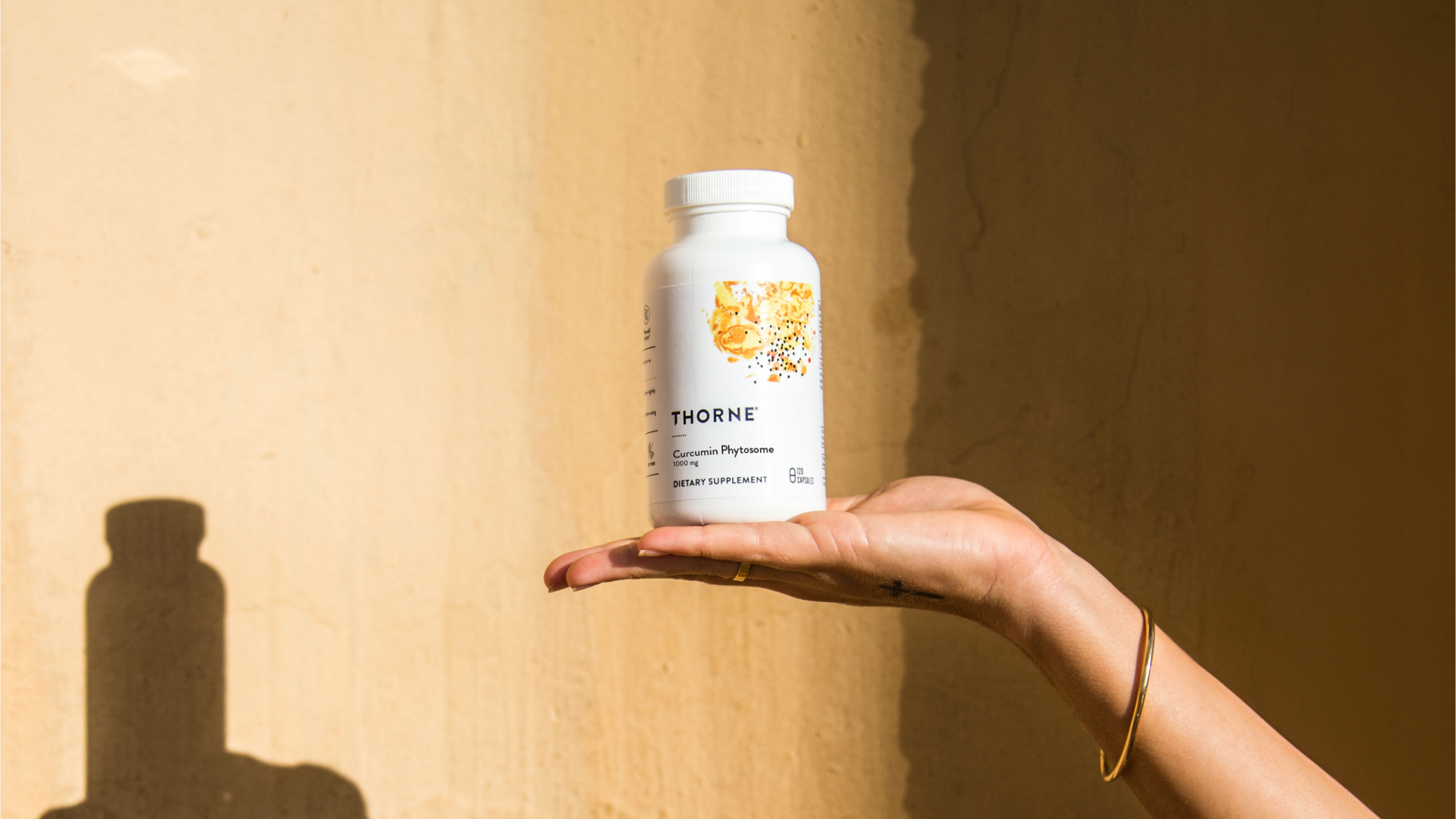People take supplements to improve or optimize their health. So what happens when you look at the label, and the ingredient list is filled with unrecognizable additives?
Perhaps your doctor or another trusted individual has recommended you start a low glycemic index diet. Perhaps you have been struggling with your mood, weight, cholesterol, or blood glucose. A low glycemic index diet could help meet these challenges.
Below, we have some scientific information about blood glucose support, glycemic load, and the glycemic index. We hope it may help you make this decision.

What is the Glycemic Index?
The glycemic index value is a measurement of how much a particular food is likely to raise your blood sugar. It can change based on how ripe a fruit or vegetable is, or by the way in which you prepare the food.
While each food has a specific value between 0 and 100 on the glycemic index, they can also be generalized as low, medium, or high. Any food with a value below 55 is “low”, any value above 70 is “high”.
The higher a food’s glycemic index value, the more rapidly it will be digested, absorbed, and metabolized, resulting in more dramatic fluctuations in blood sugar (glucose; think sugar rush/crash) [1]. A lower score represents food that takes longer to digest, thereby releasing sugars slowly over time. As such, these foods cause less fluctuation in blood sugar (think sustained energy).
Maintaining healthy blood sugar is especially important for those with diabetes or prediabetes. It can benefit those with healthy insulin responses too.
In 2020, an umbrella review of meta-analyses reported a positive association between dietary glycemic index and the risk of type 2 diabetes, coronary heart disease, and colorectal, breast, and bladder cancers [2]. The same study reported a positive association between dietary glycemic load and the risk of coronary heart disease, type 2 diabetes, and stroke [2].
The official website for the glycemic index and international glycemic index belongs to the Boden Institute of Obesity, Nutrition, Exercise, and Eating Disorders and Charles Perkins Centre at the University of Sydney. If you would like more information about the testing process or inquire about having your food item tested, visit glycemicindex.com.
How is the Glycemic Index of a food determined?
The number for each individual food in the glycemic index database is determined through the same process. Ten or more healthy individuals eat a portion of food that equates to 50 grams of available carbohydrates (excluding indigestible fiber). Then, their blood sugar is monitored for two hours following the meal. The response in each subject’s blood sugar after eating the food item is compared to their response to an equivalent dose of pure glucose. A food response value is divided by a glucose response value to get a glycemic index value for each subject. The average value for all of the subjects then becomes the official glycemic index value of that food.
Factors Affecting Glycemic Index
Whether a food is “low, medium, or high” on the glycemic index comes down to a few important factors. The chemical and physical structure of the food, how refined the carbohydrates within it are, how the food is cooked, and how much of the food is made up of carbohydrates versus other substances that affect the speed of digestion. For example, it’s not hard to guess that a candy bar like Snickers is full of refined sugar. However, Snickers are a low glycemic food. This is because the amount of fat (and some protein from the peanuts) actually slows its digestion significantly. This mitigates the amount of sugar that would otherwise cause a blood sugar spike.
Cook time is one way you can adjust the glycemic index value of your food. Raw vegetables and fruit, for example, take more time and energy to digest than their cooked counterparts. Raw foods typically have a lower glycemic index value. The glycemic index of pasta is also a range. “Al dente” pasta is slightly harder to digest (and lower on the glycemic index) than a softer noodle.
What is the difference between Glycemic Index (GI) and Glycemic Load (GL)?
The glycemic index does not account for portion size, which is important if you are closely monitoring your blood sugar. However, you can use the glycemic index to calculate “glycemic load”, which factors in how much of the food you eat.
To calculate a meal’s glycemic load, multiply a food’s glycemic index by the number of grams of carbohydrates in the serving, then divide the sum by 100. The lower the glycemic index of each food on your plate, the lower the glycemic load your meal will carry. One unit of glycemic load estimates an effect that is equivalent to consuming one gram of glucose.
If you look up the glycemic index value for a food, many databases will also suggest a serving size and note what the glycemic load of that serving would be. For example, strawberry jam (a high-sugar food) has a moderate/low glycemic index of 51.
According to the international database, the recommended serving is 30 g (about 1.5 tablespoons), 20 g of which is carbohydrate. This means the glycemic load for 1 serving of strawberry jam is 10.2 (51 x 20 = 1020, 1020/100 = 10.2). If the amount of jam consumed is double the recommended serving size, the glycemic load doubles to 20.4, but the glycemic index value for the jam is still 51.
What are the potential benefits of a Low Glycemic Diet?
Monitoring the glycemic index of what you’re eating is specifically designed to help maintain healthy blood sugar levels. However, it can also support energy balance, weight loss and maintenance, cholesterol management, and even a more stable mood.
Diabetes
Diabetes is a condition in which the body either doesn’t produce (type 1) or doesn’t respond appropriately (type 2) to the hormone insulin. Insulin’s job is to signal to cells that glucose (sugar) is available for absorption. Without effective insulin signaling, the cells of the body cannot take in glucose, the most important molecule for energy production. This leads to dysregulated levels of glucose in the blood (blood sugar) and symptoms that include mood changes, blurred vision, fatigue, overwhelming thirst or hunger, and numbness or tingling in extremities. If left unmanaged, the condition can lead to serious complications.
All of the major diabetes organizations (including the American Diabetes Association, Canadian Diabetes Association, and Diabetes UK) now advise people with both type 1 and 2 diabetes to use the glycemic index or calculate glycemic load as part of their disease management plan [1]. Managing diabetes means knowing how much insulin you require for the amount of available sugar in the blood at any time. It follows then, that a diet causing a more stable, slow release of available glucose would be easier to manage than a series of spikes and drops.
The risk of developing type 2 diabetes increases when we carry excess weight [3]. Even calorie-free artificial sweeteners (like those in diet soda) increase type 2 diabetes risk [4]. A low glycemic diet (which still includes many sweets) may also be a smarter choice for warding off diabetes than consuming “diet” foods.
More recently, the low glycemic diet has also been recommended by the International Federation of Gynecology and Obstetrics for the intervention and management of gestational diabetes (GDM) during pregnancy [5]. Studies have shown that, when diagnosed with GDM, women who follow a low glycemic diet are less likely to need insulin injections and less likely to give birth to a high-birthweight infant [5].
Weight Management
Since excess weight is a risk factor for diabetes (among other health issues), it is important to consider what losing extra weight may do to improve our health. Not only has a low glycemic diet been shown to improve insulin sensitivity [6], but it also may help give shape to your weight loss plan. Eating a low glycemic breakfast is associated with consuming less food at lunch, which suggests a satiety effect of better-regulated blood sugar [6]. If you eat foods that cause you to feel less hunger, it follows that you may take in fewer calories overall, which is a key component to weight loss.
Choosing a low glycemic diet does not necessarily mean choosing a healthy diet, however. Remember the Snickers example mentioned earlier? The glycemic index doesn’t account for what type of nutrition (or lack thereof) a food delivers, only whether it will cause a blood sugar spike. Rather than allowing yourself anything from the “low glycemic index” list, try to keep an eye on the big picture and make sure you are still getting balanced nutrition, and add a daily multivitamin to fill any gaps.
Calculating the glycemic load of your meal is a more accurate tool, as you’ll want to make sure you are maintaining the right range for your body type, insulin sensitivity, and your weight goals. One slice of pizza has the same glycemic index as 4 slices of pizza, but the glycemic load (and the calorie count) is multiplied with each slice.
Cholesterol & Disease Management
Multiple studies have demonstrated the benefit of the low glycemic diet on cholesterol levels. One study showed that after just 5 weeks on a low glycemic diet, participants saw an average reduction in total cholesterol by 9.6% and low-density LDL (bad) cholesterol by 8.6% [7].
LDL cholesterol is associated with an increased risk of heart disease and stroke. The low glycemic diet, and particularly the calculation of glycemic load, is well recognized as a predictive measure against the development of coronary heart disease [8]. In fact, one study reported that their data support a hypothesis that [a blood sugar spike after a meal] is a universal mechanism of disease progression [9]. This mechanism may be relevant to the development of certain cancers as well, explaining why a high glycemic diet is also a risk factor for certain cancers [9,10].
Mood
A high glycemic diet is associated with an increased risk of depression [11]. Observational studies have shown this pattern to be true among middle-aged women consuming lots of sweets [12], college-aged students subsisting on packaged snack foods [13], and homebound elderly people with high glycemic index diets [14]. Experimental studies have even randomly assigned high and low glycemic diets, and shown a negative effect of high glycemic diets on mood [15].
One study specifically noted that progressively higher consumption of whole grain foods (low glycemic index) was associated with less incidence of depression, whereas the opposite was true for refined grains (white flour and rice; high-glycemic index), with progressively higher consumption associated with higher odds for depression. They also observed that increased vegetable consumption (low glycemic index) was associated with decreased odds for depression [11].
The mechanism behind these observations is somewhat unclear. One hypothesis is that the ratio of sugar to protein may dictate the amount of tryptophan taken up by the brain for serotonin production [11]. Another hypothesis is the relationship between sugar intake and inflammation, which is also associated with depression. Yet another possibility is that the regular spikes and drops in blood sugar cause a change in the way the brain takes in glucose and triggers a release of stress hormones. Stress hormones are known to cause symptoms such as anxiety and irritability, while the changes to brain glucose can lead to a low mood and fatigue [11].
What can I eat on a low glycemic diet?
The low glycemic diet is surprisingly unrestrictive (remember the Snickers bar has a low glycemic index value). Making some simple switches to whole grains over refined white flour and making sure your meals are balancing any carbohydrates with fat and protein should prevent most blood sugar spikes. Again, you will need to pay attention to portion size, as the glycemic load is more important than the index value of each food when it comes to the total glucose in your meal.
Foods that are naturally low-carb, like meat, seafood, nuts, and oils are great for a low glycemic diet, and may actually help to balance the glycemic load of a meal.
Examples of healthy, low-glycemic carbohydrate-rich foods are whole grain bread, fibrous fruits (apples, berries, stone fruit, etc.), raw or lightly cooked vegetables, legumes, dairy products, brown or basmati rice, sweet potatoes, squash, and corn.
Foods to avoid include watermelon, short/medium-grain white rice (including rice milk, rice noodles, rice cakes/crackers), any baked goods made with white flour, white-fleshed potatoes, instant oats, or oat milk, and any candy that is low-fat/fat-free.
Are there specific nutrients that can help stabilize my blood sugar?
Yes. If you are worried about a meal carrying a high glycemic load, consider starting with a fiber supplement, such as psyllium husk. Fiber supplements form a gel that can trap some sugar and food molecules, slowing their breakdown. By slowing digestion, they also reduce the severity of the post-meal blood sugar spike. This allows your body a slower absorption of glucose over time while also helping to control your appetite, staving off the feeling of an empty stomach, without adding a significant change to your calorie count.
Alpha lipoic acid (ALA) is another potentially beneficial nutrient for the stability of blood glucose levels [16]. ALA is easily absorbed from the gut and able to cross the blood-brain barrier. It has been shown to improve glucose metabolism in diabetic patients [17]. ALA has also been shown to support insulin-stimulated glucose uptake in insulin-resistant skeletal muscles, and so may be considered a hypoglycemic agent: a chemical that aids in cellular uptake of glucose, even when blood sugar levels are low [16].
If you find yourself struggling with blood glucose homeostasis and a low mood, curcumin may be a great addition to your supplemental routine. Curcumin, like ALA, has been shown to have some influence on the absorption of glucose by cells in insulin-resistant patients [18]. Curcumin has also been found to alleviate some behavioral symptoms and biochemical changes caused by chronic fatigue, one of the core symptoms of depression [19]. Depression has been linked to reduced levels of brain-derived neurotrophic factor (BDNF) and a decrease in the size of the hippocampus, an area of the brain tied to learning and memory. Curcumin boosts BDNF levels and potentially reverses some of these changes [20].
- The University of Sydney. “About Glycemic Index.” The University of Sydney. January 7, 2021. http://www.glycemicindex.com/about.php
- Jayedi, Ahmad, et al. “Dietary glycemic index, glycemic load, and chronic disease: an umbrella review of meta-analyses of prospective cohort studies.” Critical reviews in food science and nutrition 62.9 (2022): 2460-2469.
- Riobó Serván, Pilar. “Obesity and diabetes.” Nutricion hospitalaria 28 (2013).
- Nettleton, Jennifer A., et al. “Diet soda intake and risk of incident metabolic syndrome and type 2 diabetes in the Multi-Ethnic Study of Atherosclerosis (MESA).” Diabetes care 32.4 (2009): 688-694.
- Hod, Moshe, et al. “The International Federation of Gynecology and Obstetrics (FIGO) Initiative on gestational diabetes mellitus: A pragmatic guide for diagnosis, management, and care#.” International Journal of Gynecology & Obstetrics 131 (2015): S173-S211.
- Warren, Janet M., C. Jeya K. Henry, and Vanessa Simonite. “Low glycemic index breakfasts and reduced food intake in preadolescent children.” Pediatrics 112.5 (2003): e414-e414.
- De Rougemont, Alexis, et al. “Beneficial effects of a 5-week low-glycaemic index regimen on weight control and cardiovascular risk factors in overweight non-diabetic subjects.” British journal of nutrition 98.6 (2007): 1288-1298.
- Livesey, Geoffrey, and Helen Livesey. “Coronary heart disease and dietary carbohydrate, glycemic index, and glycemic load: dose-response meta-analyses of prospective cohort studies.” Mayo Clinic Proceedings: Innovations, Quality & Outcomes 3.1 (2019): 52-69.
- Barclay, Alan W., et al. “Glycemic index, glycemic load, and chronic disease risk—a meta-analysis of observational studies.” The American journal of clinical nutrition 87.3 (2008): 627-637.
- Sieri, S., et al. “Dietary glycemic index, glycemic load, and cancer risk: results from the EPIC-Italy study.” Scientific reports 7.1 (2017): 1-8.
- Gangwisch, James E., et al. “High glycemic index diet as a risk factor for depression: analyses from the Women’s Health Initiative.” The American journal of clinical nutrition 102.2 (2015): 454-463.
- Jeffery, Robert W., et al. “Reported food choices in older women in relation to body mass index and depressive symptoms.” Appetite 52.1 (2009): 238-240.
- Liu, Chunhong, et al. “Perceived stress, depression and food consumption frequency in the college students of China Seven Cities.” Physiology & behavior 92.4 (2007): 748-754.
- Mwamburi, D. Mkaya, et al. “Depression and glycemic intake in the homebound elderly.” Journal of affective disorders 132.1-2 (2011): 94-98.
- Cheatham, Rachel A., et al. “Long-term effects of provided low and high glycemic load low energy diets on mood and cognition.” Physiology & behavior 98.3 (2009): 374-379.
- Ansar, Hasti, et al. “Effect of alpha-lipoic acid on blood glucose, insulin resistance and glutathione peroxidase of type 2 diabetic patients.” Saudi Med J 32.6 (2011): 584-8.
- Eason, R. C., et al. “Lipoic acid increases glucose uptake by skeletal muscles of obese‐diabetic ob/ob mice.” Diabetes, Obesity and Metabolism 4.1 (2002): 29-35.
- Zhang, Dong-wei, et al. “Curcumin and diabetes: a systematic review.” Evidence-Based Complementary and Alternative Medicine 2013 (2013).
- Kulkarni, S. K., Ashish Dhir, and Kiran Kumar Akula. “Potentials of curcumin as an antidepressant.” The Scientific World Journal 9 (2009): 1233-1241.
- Sanmukhani, Jayesh, et al. “Efficacy and safety of curcumin in major depressive disorder: a randomized controlled trial.” Phytotherapy research 28.4 (2014): 579-585.
Share:
Related Posts

Thorne Celebrates 40 Years of Good Health
Maggie Chandler April 12, 2024 As it’s often said at Thorne, healthy ageing is a gift. It’s about embracing the way you feel, your experiences,

Healthy Coffee Alternatives: When to Quit Coffee & What to Drink Instead
Dr Thomas Wnorowski February 16, 2024 Key Points: Does the idea of quitting coffee make you feel all sorts of (terrible) things? It’s common. But

How Your Social Network Impacts Your Mental Health
Austin Ruff April 17, 2024 Humans are inherently social creatures. It’s in our nature to connect and want to be connected to the people around

Microbiota-Gut-Brain Axis: Behaviour and Dementia Implications
People take supplements to improve or optimize their health. So what happens when you look at the label, and the ingredient list is filled with

Gut Bacteria and GABA
People take supplements to improve or optimize their health. So what happens when you look at the label, and the ingredient list is filled with


